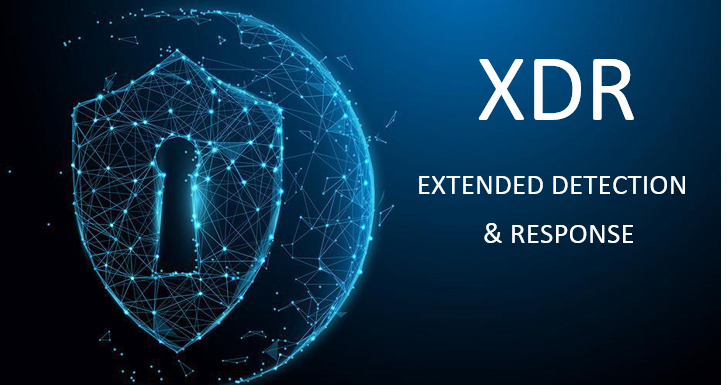As cyber threats evolve, traditional perimeter defenses are no longer enough. Security teams require solutions that detect intrusions quickly and mislead adversaries to reduce dwell time and limit damage. Extended Detection and Response (XDR) and Threat Deception Technologies work together to provide deep visibility, rapid detection, and proactive defense strategies that can outmaneuver modern attackers.
What is XDR?
Extended Detection and Response (XDR) integrates multiple security layers—endpoint, network, email, cloud, and identity—into a unified detection and response platform. Unlike siloed tools, XDR provides:
-
Centralized visibility across all assets
-
Automated threat correlation to reduce false positives
-
Faster incident response through integrated workflows
-
Advanced analytics and AI to detect sophisticated threats
XDR allows organizations to move from reactive to proactive defense by correlating data across multiple security vectors.
Understanding Threat Deception Technologies
Threat deception uses decoys, traps, and lures to mislead attackers, forcing them into controlled environments where their behavior can be studied. Key elements include:
-
Decoy Systems – Imitation servers, databases, or endpoints designed to attract malicious activity.
-
Breadcrumbs and Lures – Fake credentials, files, or network paths to guide attackers toward decoys.
-
Deception Analytics – Behavioral monitoring to detect lateral movement and unusual activity in real-time.
By confusing attackers and gathering intelligence, deception provides a proactive layer of detection beyond traditional monitoring.
Why Combine XDR and Deception?
Integrating deception with XDR amplifies both technologies, creating a multi-layered, proactive defense strategy.
1. Enhanced Threat Detection
-
Deception environments trigger alerts on suspicious activity that may bypass other controls.
-
XDR ingests these signals, correlates them with telemetry from endpoints, networks, and cloud workloads, and validates real threats.
2. Early Detection of Lateral Movement
-
Attackers often explore networks quietly before executing payloads.
-
Decoys act as tripwires, while XDR investigates related activity across the environment to reveal compromised assets.
3. High-Fidelity Alerts
-
Deception-generated alerts are low in false positives because legitimate users should not interact with decoy assets.
-
XDR consolidates these alerts with other security data to prioritize response actions.
4. Threat Intelligence Gathering
-
Deception platforms collect attacker TTPs (Tactics, Techniques, and Procedures) in real time.
-
XDR leverages this intelligence for adaptive detection rules and improved response strategies.
Real-World Use Cases
1. Ransomware Detection
Deception traps lure ransomware into isolated environments, while XDR quickly identifies compromised endpoints and halts lateral spread.
2. Insider Threat Mitigation
When an insider attempts unauthorized access, interacting with a decoy triggers an immediate alert within XDR for rapid investigation.
3. Advanced Persistent Threat (APT) Tracking
APT groups use stealthy techniques over long periods. Deception detects their presence early, and XDR correlates indicators across endpoints, network logs, and cloud instances.
Best Practices for Integration
-
Deploy Deception Strategically – Place decoys in critical network zones (e.g., crown-jewel databases, cloud storage, OT networks).
-
Leverage XDR for Unified Analytics – Feed all deception telemetry into the XDR platform for contextual analysis.
-
Automate Incident Response – Configure playbooks in XDR to quarantine endpoints or block IPs automatically upon decoy interaction.
-
Continuously Update Deception Assets – Rotate lures, credentials, and decoys to remain unpredictable to attackers.
Benefits of a Unified Approach
-
Reduced Dwell Time – Immediate alerts from deception help XDR cut investigation and containment time.
-
Proactive Defense – Attackers are misled, wasting their resources while defenders collect intelligence.
-
Operational Efficiency – Security teams can focus on validated threats instead of sifting through noise.
-
Improved ROI – Leveraging XDR with deception maximizes existing security investments while closing detection gaps.
The Future of XDR and Deception
As adversaries adopt AI-driven attacks and stealthier techniques, XDR and deception will evolve to use autonomous response, behavioral analytics, and threat intelligence sharing. Future platforms may dynamically generate decoys, adapt detection algorithms in real-time, and orchestrate deception strategies across hybrid and multi-cloud environments.
Conclusion
XDR and Threat Deception Technologies represent a powerful, proactive defense framework. By unifying visibility, analytics, and deception-driven intelligence, organizations can stay ahead of attackers, reduce risk exposure, and ensure a resilient cybersecurity posture.
